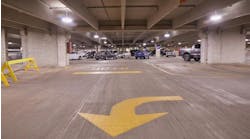When we think of eye safety, we usually think “safety glasses.” Though effective eye protection means more than just wearing safety glasses, the glasses are key to protecting your eyes.
Obviously, you need to wear them on your nose, not the top of your head or in a pocket. For some people, the time to put safety glasses on is when they spot the boss approaching. For smart people, the time to put safety glasses on is before they enter the area that poses the eye danger.
Examples include:
- On a large construction site, you don your glasses before walking through the gate.
- In a manufacturing plant, you put them on before you open the door from the administrative office to the “the manufacturing floor.”
- For outdoor work, you put them on before you exit your vehicle.
Also:
- Replace glasses that are no longer serviceable (e.g., the lenses are scratched).
- Never remove the side shields.
- Use approved lens cleaners.




